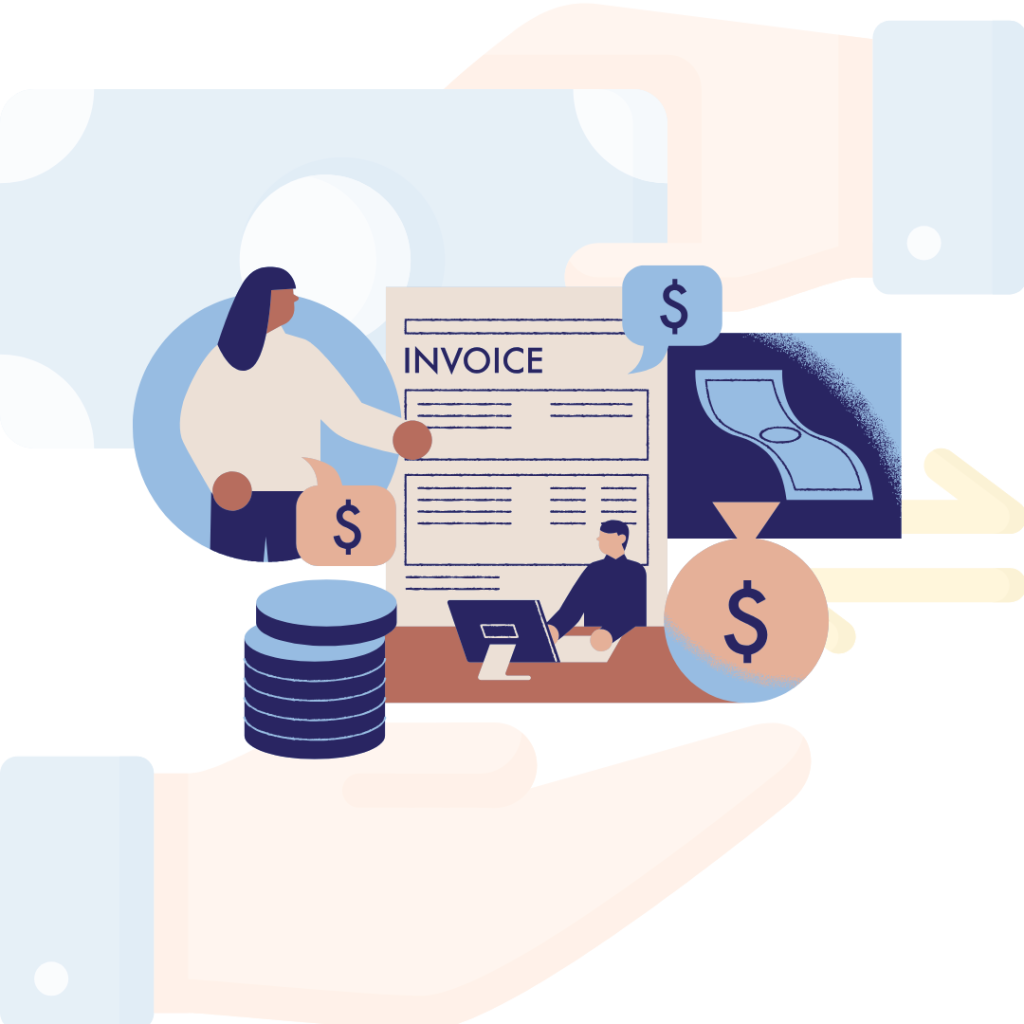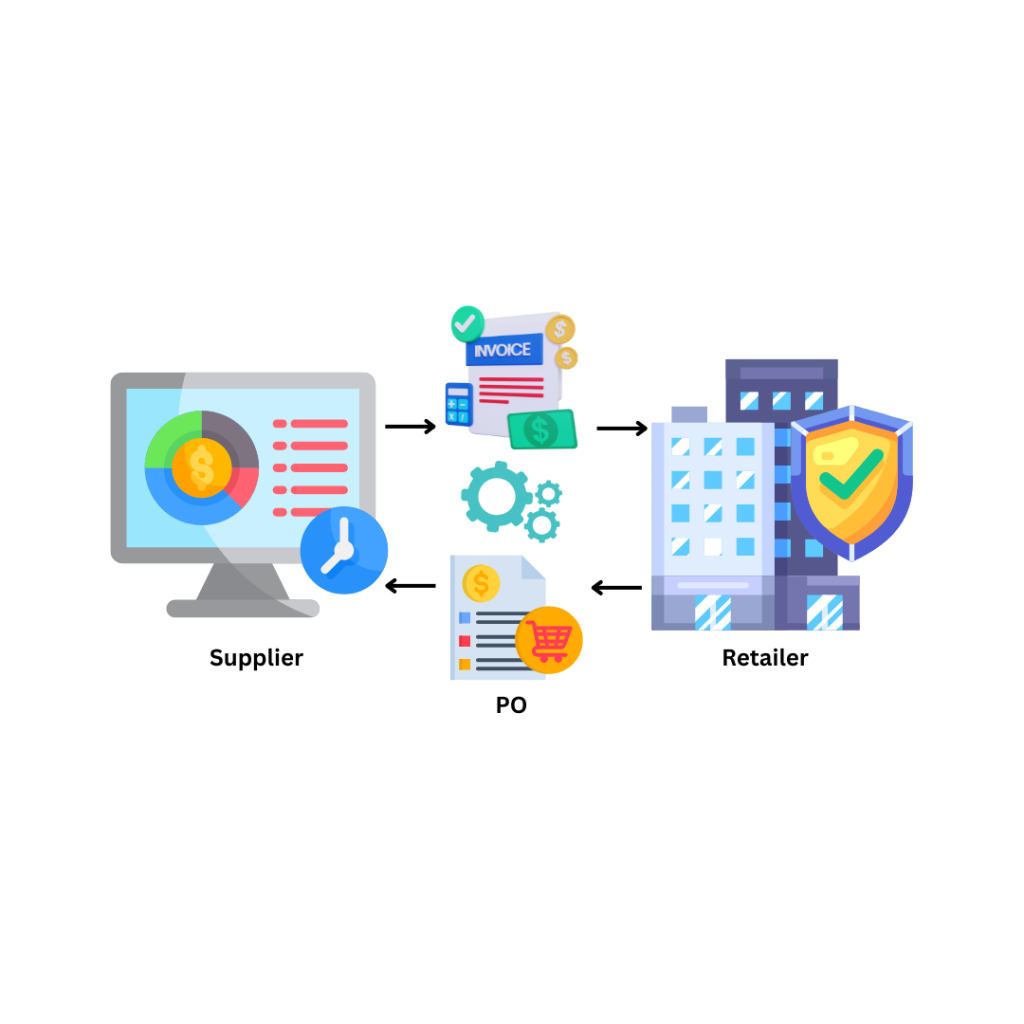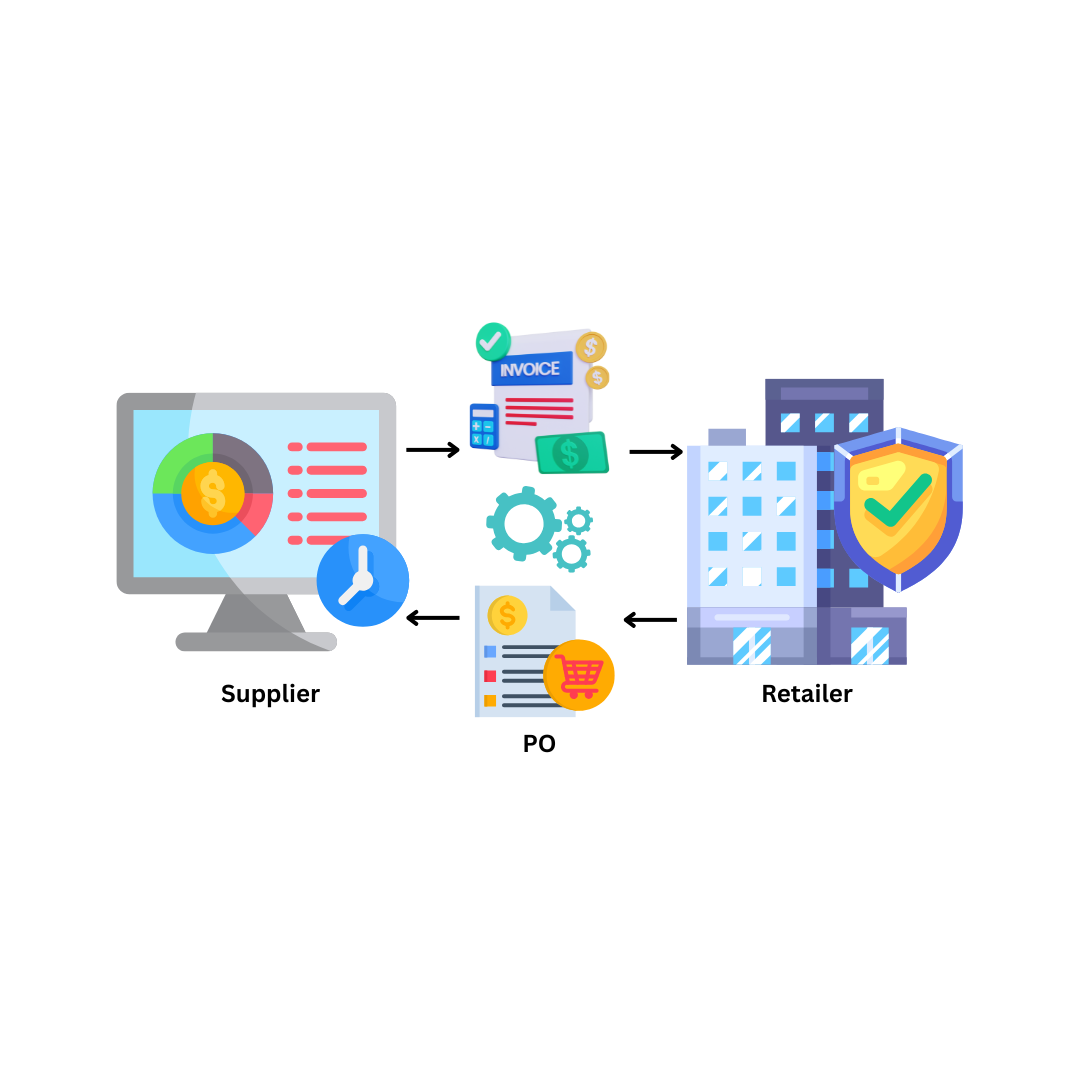Introduction
The electronic invoicing system market has exploded to $13.5 billion in 2023, and experts project it will reach $60.9 billion by 2032. This remarkable growth isn’t surprising when we look at the numbers – while companies spend approximately $36 to process a single paper invoice manually, electronic invoicing cuts this cost by two-thirds.
We’ve observed that businesses typically wait 22 days for invoice payments with traditional methods. However, by implementing electronic invoicing and automation, this waiting period shrinks dramatically to just two days. Additionally, with only 17% of small firms currently using automated accounts receivables, we’re seeing a massive opportunity for businesses to modernize their invoicing processes.
What Is Electronic Invoicing System and EDI Invoicing?
Electronic documents have fundamentally changed how businesses handle transactions. An electronic invoicing system represents a structured digital approach that replaces traditional paper-based billing processes.

Electronic Invoicing Meaning and Evolution
Electronic invoicing meaning goes beyond simply sending PDF invoices via email. True e-invoicing involves the creation, transmission, and processing of invoices in a structured digital format that allows for automated handling. Initially developed in 1965 with the first Electronic Data Interchange (EDI) transactions, e-invoicing has evolved significantly. Throughout the 1970s, File Transfer Protocol (FTP) enabled easier file exchanges, but the real transformation came in the 1990s with the accessible internet, when businesses began shifting to electronic invoice formats for improved efficiency.
Today’s e-invoicing systems have advanced from simple PDF emails to fully integrated platforms with e-invoicing portals that connect directly to accounting systems. Moreover, many governments worldwide have moved from allowing digital options to actively mandating e-invoicing to combat tax fraud and increase transparency.
Understanding EDI Invoicing vs. Traditional e-Invoicing
EDI invoicing represents a specific type of electronic invoicing where standardized formats enable direct computer-to-computer exchange of invoice data. Unlike basic PDF invoices sent via email (which still require manual processing), EDI invoices follow standards like ANSI X12, with the EDI 810 format being the most common in the United States.
The key differences include:
- EDI involves deep system integration and specialized software, whereas basic e-invoicing often uses web portals or standardized cloud platforms
- Traditional e-invoicing primarily focuses on invoices, while EDI transmits various business documents beyond just invoices
- Processing a paper invoice costs approximately $38, while EDI invoices cost just $1.35
Key Components of an Electronic Invoice System

An effective electronic invoice management system contains several integral components:
- Onramp – The initial point where accounts payable invoices enter the processing flow
- Capture & Categorization – Where data from invoices is extracted and organized
- Document Imaging & Management – Handles storage and retrieval of invoice documents
- Bi-directional Integration – Connects with existing business systems
- Workflow and Business Rules – Automates approval processes
- Visibility – Provides actionable insights into invoice status
- Payments – Finalizes the transaction process
For businesses exploring e-invoicing registration options, it’s important to consider both e-invoicing requirements and how these systems integrate with existing accounting platforms through your e-invoicing portal of choice.
How Electronic Invoice Format Works in EDI Systems
Standard formats form the backbone of any electronic invoicing system, enabling seamless transmission between trading partners. Understanding these formats is crucial for successful e-invoicing implementation.
Standard electronic invoice formats (XML, EDIFACT, ANSI X12)
Three primary formats dominate the electronic invoice landscape, each with distinct characteristics:
ANSI X12 is the predominant standard in North America, with the EDI 810 transaction set specifically designed for invoices. This format enables automatic exchange of invoicing information between suppliers and customers, replacing paper-based invoices. When using ANSI X12, the EDI 810 message is generated by the supplier and sent to the customer, who validates it against specifications before returning a functional acknowledgment.
EDIFACT (Electronic Data Interchange for Administration, Commerce, and Transport) represents another widely used standard, particularly popular outside North America. The INVOIC message, based on UN/EDIFACT, contains segments with billing information about traded materials/services and details about the sender and recipient. The most prominent version is often abbreviated as INVOIC D96A.
XML (eXtensible Markup Language) has rapidly gained popularity as it uses the internet rather than private networks, making it more affordable. XML encodes documents in a way that both humans and machines can read, offering greater flexibility and customization compared to traditional EDI formats.
E-invoice Example Structure For Various Standards
EDI 810 Invoice (ANSI X12 Standard)
The most common standard used in North America among B2B businesses is to exchange documents in a standardized format that is universally accepted and becomes Ean DI complaint.
ISA*00* *00* *ZZ*SENDERID *ZZ*RECEIVERID *240401*1234*U*00401*000000001*0*T*:~
GS*IN*SENDERID*RECEIVERID*20240401*1234*1*X*004010~
ST*810*0001~
BIG*20240330*123456789*PO123456*20240325~
REF*DP*987654~
N1*BY*BUYER COMPANY*92*12345~
N3*123 Main Street~
N4*New York*NY*10001*US~
N1*ST*SHIP TO COMPANY*92*67890~
N3*456 Warehouse Rd~
N4*Los Angeles*CA*90002*US~
ITD*01*3*2**30**NET 30~
IT1*1*10*EA*50.00*PE*IN*12345~
PID*F****Product Description Here~
TDS*50000~
CTT*1~
SE*12*0001~
GE*1*1~
IEA*1*000000001~
JSON invoice Sample
{
“invoice_number”: “123456789”,
“invoice_date”: “2024-03-30”,
“due_date”: “2024-04-30”,
“buyer”: {
“name”: “Buyer Company”,
“id”: “12345”,
“address”: {
“street”: “123 Main Street”,
“city”: “New York”,
“state”: “NY”,
“zip”: “10001”,
“country”: “US”
}
},
“ship_to”: {
“name”: “Ship To Company”,
“id”: “67890”,
“address”: {
“street”: “456 Warehouse Rd”,
“city”: “Los Angeles”,
“state”: “CA”,
“zip”: “90002”,
“country”: “US”
}
},
XML Sample Invoice Structure
An e-invoice XML example typically follows this hierarchical structure:
<Invoice>
<ProfileID>reporting:1.0</ProfileID>
<ID>KSAINV-002</ID>
<UUID>8d487816-70b8-4ade-a618-9d620b73814a</UUID>
<IssueDate>2022-04-07</IssueDate>
<InvoiceTypeCode>388</InvoiceTypeCode>
<DocumentCurrencyCode>SAR</DocumentCurrencyCode>
<!– Supplier and Customer Information –>
<!– Line Items and Tax Information –>
</Invoice>
XML invoices use tags that indicate what each data element represents, making the format highly customizable yet standardized.
INVOIC (UN/EDIFACT Standard)
UNA:+.? ‘
UNB+UNOC:3+SENDERID+RECEIVERID+240401:1234+000000001′
UNH+0001+INVOIC:D:96A:UN’
BGM+380+123456789+9′
DTM+137:20240330:102′
DTM+131:20240325:102′
NAD+BY+12345::9′
NAD+ST+67890::9′
LIN+1++12345:IN’
IMD+F++:::Product Description Here’
QTY+47:10:EA’
PRI+AAA:50.00′
MOA+125:500.00′
UNS+S’
CNT+2:1′
UNT+12+0001′
UNZ+1+000000001′
Data Felds in an Electronic Invoice Template
Every electronic invoice template must contain specific data fields to ensure validity and compliance across various e-invoicing systems:
- Invoice identification (number, date, UUID)
- Buyer and seller information (names, addresses, tax IDs)
- Payment terms and methods
- Item details (descriptions, quantities, prices)
- Tax information and calculations
- Total amounts (subtotals, tax amounts, payable amount)
- Delivery information
These standardized fields enable computer systems to process invoices automatically without human intervention, significantly reducing processing times and errors. For businesses implementing an electronic invoice management system, understanding these formats and required fields is essential for successful integration with trading partners.
Step-by-Step E-Invoicing Implementation Guide
Implementing an electronic invoicing system requires careful planning and execution. First, let’s explore the step-by-step approach to ensure successful adoption.
1. Assessing your business needs and readiness
Before diving into e-invoicing implementation, evaluate your current invoicing processes to identify pain points and improvement areas. Ask yourself: How many invoices do you handle monthly? What challenges exist in your current system? Understanding these needs will help determine which electronic invoicing software best suits your business. Additionally, conduct a comprehensive review of your existing invoicing and accounting systems to assess their readiness for integration with e-invoicing solutions.
2. Selecting the right e-invoicing software solutions
When evaluating e-invoicing software solutions, prioritize these essential features:
- Integration capabilities with existing accounting or ERP systems
- Compliance with local and international e-invoicing regulations
- Automation capabilities to reduce manual input
- Security features including encryption and role-based access
- Scalability to accommodate business growth
The right e-invoicing platform should align with your business size, industry, and budget. Furthermore, ensure it supports the appropriate electronic invoice format standards required by your trading partners.
E-invoicing registration and setup process
The e-invoicing registration process typically involves creating an account on your chosen e-invoicing portal. Subsequently, you’ll need to validate your business information and set up authentication credentials. For government-mandated systems, registration often requires verification through mobile number and email. Following registration, configure your electronic invoice template according to e-invoicing guidelines specific to your region.
3. Integration with existing accounting systems
Successful integration requires careful data mapping between your current system and the e-invoicing system. Prior to full implementation, conduct thorough testing with a small data set to identify potential issues. Many e-invoicing providers offer pre-built connectors for popular accounting systems, simplifying this process.
4. E-invoicing training for your team
Develop comprehensive e-invoicing training materials including user manuals, presentations, and instructional videos. Organize practical workshops that include interactive exercises allowing employees to practice with the electronic invoice management system. Following initial training, provide ongoing support through a dedicated technical team and maintain a knowledge base for frequently asked questions.
Key Benefits of Electronic Invoicing Using EDI
Businesses implementing an electronic invoicing system can achieve remarkable return on investment—with processing costs reduced by 60-80% when switching from paper to e-invoices. Let’s explore the specific advantages that make e-invoicing increasingly essential for modern businesses.
1. Cost and time savings
The financial benefits of an electronic invoice management system are substantial. Companies can save up to 80% on invoicing costs by eliminating expenses related to paper, printing, postage, and storage. Indeed, while processing a paper invoice costs approximately $38, an EDI invoice costs just $1.35. These savings extend to human resources as well—e-invoicing systems reduce the need for manual data entry, cutting labor costs and freeing staff for higher-value activities.
2. Improved accuracy and reduced errors
Electronic invoicing software significantly enhances data accuracy by replacing error-prone manual processes. With e-invoicing, validation rules automatically check for mistakes and inconsistencies before an invoice is transmitted. This automated verification helps eliminate the common errors that plague traditional invoicing—including incorrect amounts, duplicate invoices, and missing information. Since EDI uses standardized formats, all parties exchange invoice data in consistent, machine-readable templates, further reducing the potential for misinterpretation.
3. Faster payment cycles and better cash flow
An electronic invoicing platform dramatically accelerates payment cycles. Studies show e-invoicing implementation reduces processing times by 61%, allowing businesses to receive payments significantly faster. Since e-invoices are delivered instantly rather than waiting for postal delivery, payment cycles begin immediately. In fact, customers can settle accounts mere minutes after invoice posting, dramatically improving cash flow management and working capital availability.
4. Enhanced security and compliance
Modern e-invoicing solutions incorporate robust security features including encryption, digital signatures, and role-based access controls. Hardware Security Modules (HSMs) protect the cryptographic keys at the heart of digital signatures, ensuring invoice integrity and non-repudiation. These security measures help businesses prevent fraud while safeguarding sensitive financial data, making electronic invoicing considerably more secure than paper-based or email methods.
5. Environmental benefits
The environmental impact of adopting an electronic invoicing system is substantial. Studies demonstrate carbon reductions ranging from 36% to 99% when switching from paper-based to digital services. For every million bills produced electronically instead of on paper, 18.9 tons of CO2 equivalent are avoided. Moreover, e-invoicing eliminates timber usage, helping companies avoid the use of high-deforestation risk commodities while supporting corporate sustainability goals.
Conclusion
Electronic invoicing represents a significant leap forward from traditional paper-based systems, offering businesses substantial advantages in cost reduction, efficiency, and environmental impact. Companies switching to e-invoicing typically cut processing costs by 60-80%, while EDI solutions reduce per-invoice expenses from $38 to just $1.35.
The shift toward electronic invoice management systems makes perfect business sense. Rather than waiting 22 days for payments through manual processes, businesses receive funds within two days through automated systems. This dramatic improvement in payment cycles directly enhances cash flow management and working capital availability.
Security features like encryption and digital signatures make electronic invoicing considerably safer than paper-based methods. Additionally, automated validation rules eliminate common errors such as incorrect amounts or duplicate invoices, ensuring accuracy throughout the billing process.
Businesses ready to modernize their invoicing processes should consider that Commport EDI Solutions helps you implement and optimize electronic invoicing systems tailored to your specific needs. Starting with a thorough assessment of current processes, followed by careful software selection and team training, organizations can successfully transition to efficient e-invoicing operations.
The future of invoicing is undeniably digital. Companies embracing electronic invoicing now position themselves ahead of competitors while contributing to environmental sustainability through reduced paper usage. Though only 17% of small firms currently use automated accounts receivable systems, this number will certainly grow as businesses recognize the clear advantages of electronic invoicing solutions.
Commport EDI Solutions For E-Invoicing
Frequently Asked Questions
? Electronic invoicing uses standardized digital formats, reducing manual data entry and errors. It’s faster, more cost-effective, and environmentally friendly compared to paper invoices, which require manual processing and are prone to mistakes.
EDI invoicing typically involves direct computer-to-computer exchange of invoice data in standardized formats, often used for B2B transactions. E-invoicing is a broader term that can include various digital invoice formats, including PDFs sent via email or web portals.
Electronic invoicing systems offer significant cost and time savings, improved accuracy, faster payment cycles, enhanced security and compliance, and environmental benefits. They can reduce invoice processing costs by 60-80% and accelerate payment times from 22 days to just 2 days.
An effective electronic invoice management system should include components for invoice capture and categorization, document imaging and management, integration with existing business systems, automated workflow and approval processes, visibility into invoice status, and payment processing capabilities.
To prepare for e-invoicing implementation, businesses should assess their current invoicing processes and needs, select appropriate e-invoicing software, complete the registration process, integrate the new system with existing accounting platforms, and provide comprehensive training for their team.





